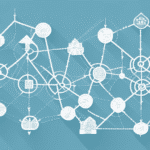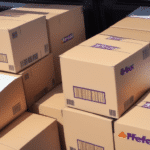Introduction to Delivery Route Planning
In today’s competitive market, businesses that rely on transportation to deliver goods and services must prioritize efficient delivery route planning. Effective route planning not only optimizes logistics operations but also enhances customer satisfaction, reduces costs, and minimizes environmental impact. This comprehensive guide explores the multifaceted benefits of delivery route planning and offers insights into implementing strategies that can significantly boost a company's bottom line.
Benefits of Delivery Route Planning
Efficiency Improvements
Delivery route planning streamlines the transportation process by identifying the most efficient paths for delivery drivers. According to a study by the U.S. Department of Transportation, optimized routes can reduce delivery times by up to 20%, leading to faster service and increased productivity.
By minimizing travel distance and avoiding traffic congestion, businesses can conserve fuel and reduce wear and tear on vehicles. This efficiency not only lowers operational costs but also enhances the reliability of delivery schedules, ensuring that customers receive their orders promptly.
Economic Advantages
Effective route planning translates directly into cost savings. Fuel expenses, which account for a significant portion of transportation costs, can be decreased by optimizing routes. Additionally, businesses can reduce labor costs by enabling drivers to complete more deliveries within the same time frame.
Moreover, minimizing delivery errors and delays reduces the costs associated with returns, refunds, and lost sales. According to a report by Statista, businesses that implement route optimization strategies can see up to a 15% increase in profitability.
Customer Service Enhancement
Timely and accurate deliveries are critical for maintaining high levels of customer satisfaction. Delivery route planning ensures that products reach customers on schedule, fostering trust and loyalty. A survey by the Forbes indicates that 89% of consumers are more likely to return to a retailer that provides reliable delivery services.
Additionally, providing customers with accurate delivery windows and real-time tracking information enhances the overall shopping experience, encouraging repeat business and positive word-of-mouth referrals.
Environmental Impact
Optimizing delivery routes contributes to reducing a company's carbon footprint. By minimizing the distance traveled and avoiding congested areas, businesses can lower their fuel consumption and decrease greenhouse gas emissions. According to the Environmental Protection Agency, transportation accounts for nearly 28% of total U.S. greenhouse gas emissions, making route optimization a vital strategy for sustainability.
Furthermore, businesses that prioritize eco-friendly practices can enhance their brand image and appeal to environmentally conscious consumers, potentially opening new market opportunities.
Technological Tools for Route Optimization
Mapping Software and GPS
Advancements in mapping software and GPS technology have revolutionized delivery route planning. Tools like Google Maps and Mapbox offer real-time traffic updates and route suggestions, enabling businesses to dynamically adjust their delivery paths based on current road conditions.
These technologies not only enhance route accuracy but also provide valuable data for analyzing delivery patterns and identifying areas for improvement.
Real-Time Tracking Systems
Real-time tracking systems allow businesses to monitor the location and progress of their delivery vehicles continuously. Solutions such as Geotab and TomTom provide comprehensive tracking capabilities, ensuring that drivers adhere to optimized routes and enabling quick responses to any deviations or delays.
With real-time tracking, businesses can enhance transparency, improve accountability, and provide customers with accurate delivery updates.
Data Analytics
Data analytics plays a crucial role in refining delivery route planning strategies. By analyzing historical delivery data, traffic patterns, and driver performance, businesses can identify trends and make informed decisions to optimize future routes. Platforms like Tableau and Microsoft Power BI enable companies to visualize and interpret complex data sets effectively.
Leveraging data-driven insights allows businesses to continuously enhance their logistics operations, leading to sustained efficiency and cost savings.
Implementing Delivery Route Planning Strategies
Overcoming Challenges
Implementing delivery route planning strategies can present several challenges. Resistance from drivers accustomed to established routes is a common hurdle. To mitigate this, businesses should involve drivers in the planning process and provide adequate training on new systems and procedures.
Integration with existing technologies can also be complex. Ensuring compatibility between route planning software and other logistics systems requires careful planning and possibly investment in new infrastructure.
Best Practices
To successfully implement delivery route planning, businesses should adhere to the following best practices:
- Assess Delivery Needs: Understand the specific requirements of your delivery operations, including volume, frequency, and geographic coverage.
- Invest in the Right Technology: Choose route planning tools that integrate seamlessly with your existing systems and offer scalability as your business grows.
- Train Employees: Provide comprehensive training for drivers and logistics staff to ensure effective use of new route planning systems.
- Monitor and Adjust: Continuously monitor the performance of your route planning strategies and make adjustments based on data insights and feedback.
Future of Delivery Route Planning
Trends and Innovations
The future of delivery route planning is poised to be shaped by several emerging trends and innovations:
- Artificial Intelligence and Machine Learning: AI-driven algorithms can predict traffic patterns, optimize routes in real-time, and adapt to changing conditions more efficiently than traditional methods.
- Autonomous Vehicles: The development of self-driving delivery vehicles may revolutionize route planning by enabling continuous, optimized deliveries without the need for human intervention.
- Internet of Things (IoT): IoT devices can provide granular data on vehicle performance, environmental conditions, and delivery status, enhancing the precision of route planning.
These advancements will enable businesses to achieve higher levels of efficiency, cost-effectiveness, and customer satisfaction in their delivery operations.
Case Studies of Successful Implementation
Amazon's Delivery Optimization
Amazon has successfully implemented advanced delivery route planning strategies to manage its vast logistics network. By utilizing machine learning algorithms and real-time data analytics, Amazon optimizes delivery routes to ensure swift and accurate deliveries. This has enabled the company to offer same-day and next-day delivery options, significantly enhancing customer satisfaction and loyalty.
UPS's Route Optimization Software
UPS employs its proprietary ORION (On-Road Integrated Optimization and Navigation) software to streamline its delivery routes. ORION analyzes vast amounts of data to determine the most efficient delivery paths, allowing UPS to save millions of miles driven each year. This has resulted in substantial fuel savings and a reduction in greenhouse gas emissions, demonstrating the economic and environmental benefits of effective route planning.
Conclusion
Delivery route planning is an indispensable strategy for businesses aiming to optimize their logistics operations, reduce costs, and enhance customer satisfaction. By leveraging advanced technologies and adhering to best practices, companies can achieve significant improvements in efficiency and profitability. Furthermore, embracing sustainable route planning not only benefits the environment but also strengthens a company's reputation among eco-conscious consumers. As technological innovations continue to evolve, delivery route planning will become increasingly sophisticated, offering businesses the tools they need to stay competitive in a dynamic market.




















